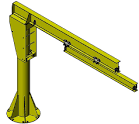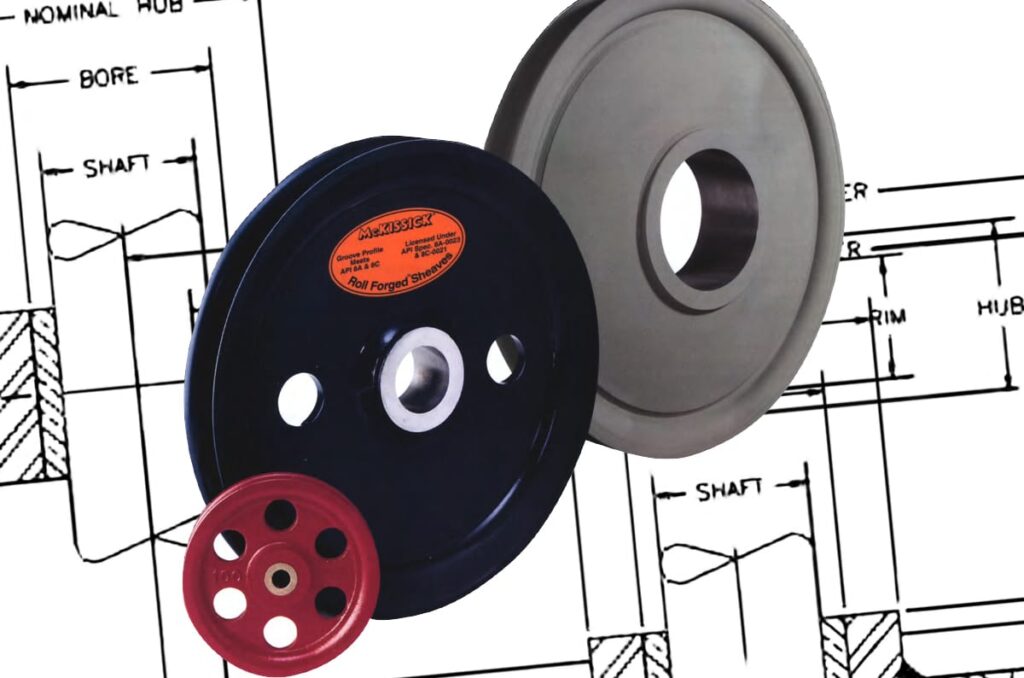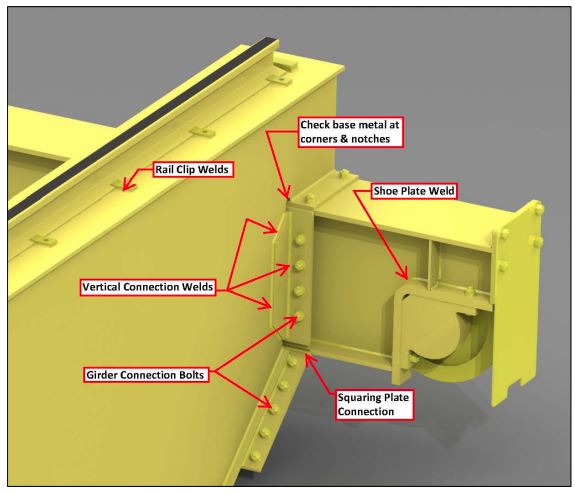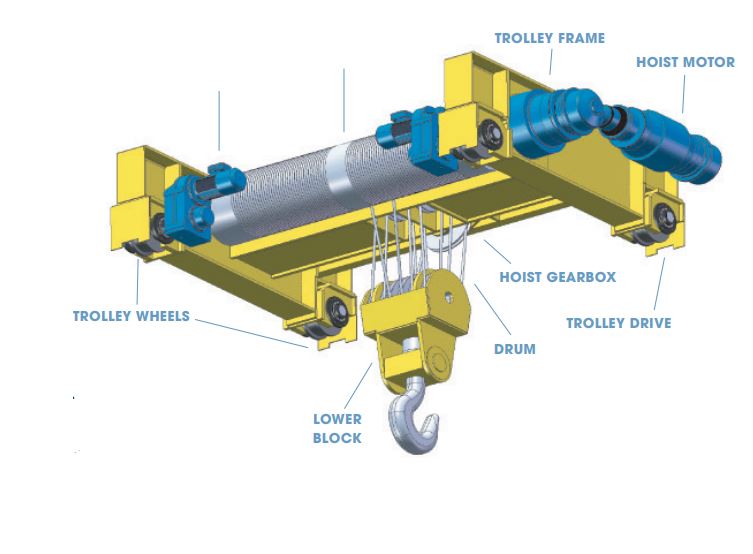## Introduction Overhead cranes are essential machines used in various industries and mechanical plants for lifting heavy loads. The safe and efficient operation of overhead cranes relies on accurately calculating the wheel load. The wheel load refers to the total load that a single crane wheel can bear, and it plays a crucial role in determining the design and structural integrity of the crane. In this article, we will explore the process of calculating the wheel load for an overhead crane, taking into account various factors such as the crane’s capacity, weight distribution, and dynamic effects.
Understanding Wheel Load
Before delving into the calculation process, let’s first understand what wheel load entails. The wheel load refers to the amount of load that is supported by each individual wheel of the crane. When a crane is used to lift and move heavy loads, the weight is distributed among the wheels. Each wheel contributes a portion of the total load, and it is crucial to ensure that each wheel can bear its designated share of the weight. This distribution of load is vital for maintaining stability, preventing excessive stress on individual wheels, and ensuring the overall safety of the crane.
Factors Affecting Wheel Load
Several factors come into play when calculating the wheel load for an overhead crane. These factors include the crane’s lifting capacity, weight distribution, dynamic effects, and the position of the hook. Let’s take a closer look at each of these factors:
1. Lifting Capacity
The lifting capacity of the crane is a fundamental parameter that determines the maximum load it can handle. It is essential to consider the rated lifting capacity when calculating the wheel load, as it directly influences the distribution of weight among the wheels.
2. Weight Distribution
The weight distribution of the crane includes the dead weight of the crane structure, the weight of the trolley, and the load being lifted. Properly distributing the weight ensures that each wheel carries an appropriate amount of load, minimizing the risk of overload and uneven stress on the wheels.
3. Dynamic Effects
During crane operation, dynamic effects such as sudden drops, slides of the sling, or braking actions can impact the wheels and increase the static wheel load. These dynamic effects need to be taken into account to determine the maximum dynamic vertical wheel load. An impact factor, denoted as ϕ, is applied to the static wheel load to calculate the dynamic wheel load.
4. Hook Position
The position of the hook plays a significant role in determining the wheel load. The minimum and maximum hook positions are considered to determine the distribution of weight and the corresponding wheel loads. The position of the hook affects the lever arm length and, consequently, the load on each wheel.
Calculation Process
Now that we have an understanding of the factors involved let’s explore the step-by-step process of calculating the wheel load for an overhead crane:
1. Determine the Lifting Capacity
The first step is to determine the lifting capacity of the crane. The lifting capacity is the maximum load that the crane can safely lift. It is crucial to consider this capacity when calculating the wheel load, as it directly affects the distribution of weight among the wheels.
2. Calculate the Dead Weight
Next, calculate the dead weight of the crane, which includes the weight of the crane structure and any additional components such as the trolley or hoist. This weight contributes to the overall load that needs to be distributed among the wheels.
3. Determine the Wheel Configuration
Consider the number of wheels on the crane and their configuration. The number of wheels can vary depending on the crane design and capacity. The wheel configuration affects the load distribution and, consequently, the wheel load calculation.
4. Distribute the Load
Distribute the total load among the wheels based on their configuration. Each wheel should carry an appropriate portion of the total load to ensure balanced weight distribution and prevent overloading of individual wheels.
5. Consider Dynamic Effects
Take into account the dynamic effects that can occur during crane operation, such as sudden drops or braking actions. Apply the appropriate impact factor, ϕ, to the static wheel load to calculate the dynamic wheel load. The impact factor varies depending on the crane’s duty class.
6. Determine the Wheel Load
Based on the calculated static and dynamic wheel loads, determine the maximum and minimum wheel loads. The maximum wheel load represents the maximum load that a single wheel can bear, while the minimum wheel load is the minimum load under specific conditions, such as starting or braking.
7. Verify Wheel Load Capacity
Compare the calculated wheel loads with the rated capacity of the crane wheels. Ensure that the calculated wheel loads do not exceed the specified capacity to maintain the safety and stability of the crane.
Conclusion
Accurately calculating the wheel load for an overhead crane is crucial for ensuring the safe and efficient operation of the crane. By considering factors such as lifting capacity, weight distribution, dynamic effects, and hook position, one can determine the appropriate wheel load for the crane. Following the step-by-step calculation process and verifying the wheel load capacity helps maintain the structural integrity of the crane and prevent overloading of individual wheels. Proper wheel load calculation is essential for the safe and reliable functioning of overhead cranes in various industries.











